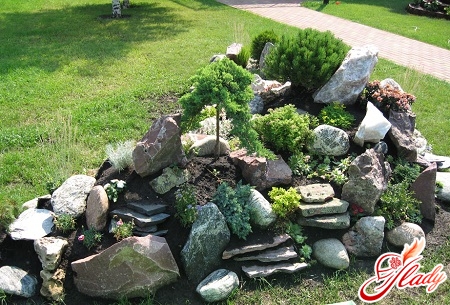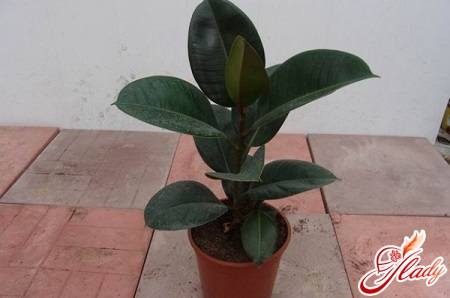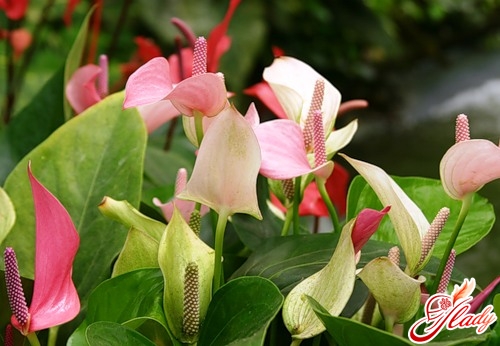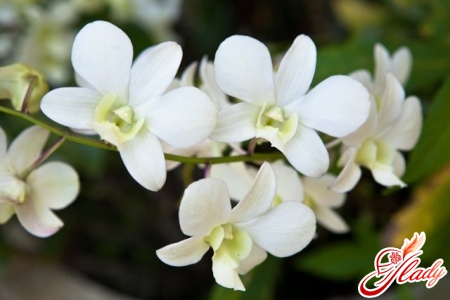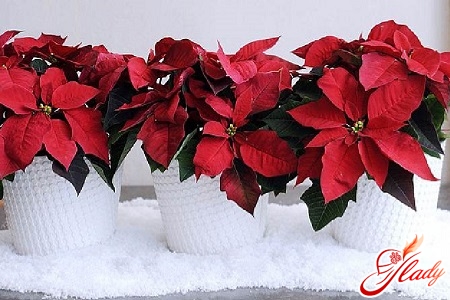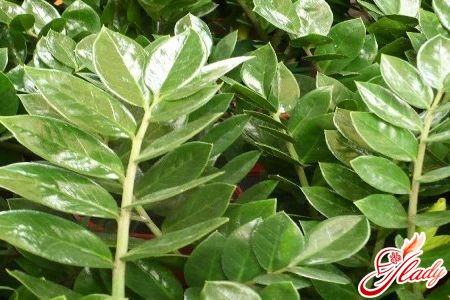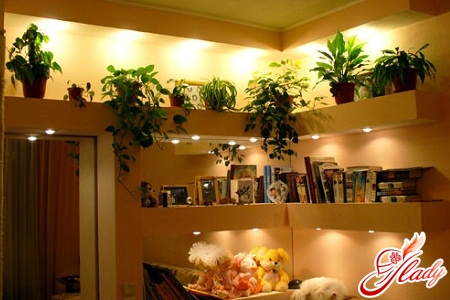 It doesn't matter who you are - an avid collectorrare plants that are always short of space, or you just want to decorate the room and put something cute and green on a cute shelf, maybe fluffy, or even better - flowering. In any case, you can't do without raising some of the greenery up. Often, there is so little space in the house that the idea of moving plants in the interior up seems more than reasonable. This can be anything: a shelf on the wall, and a shelf hung near the window like a swing. It should be taken into account that the higher the plants are placed, the longer their hanging vines should be, otherwise the flower simply will not be visible. By providing such shelves, hanging pots and boxes, you successfully solve the issue of the correct placement of drooping indoor plants in the interior. And they are the ones that decorate the interior best. In the hands of a good designer, they generally turn into entire green compositions or panels. You will be able to show your taste and imagination if you can beautifully combine different plants with whole and dissected leaves, round and linear, monochromatic and variegated, plant them thicker somewhere, and give your eyes a rest somewhere.
It doesn't matter who you are - an avid collectorrare plants that are always short of space, or you just want to decorate the room and put something cute and green on a cute shelf, maybe fluffy, or even better - flowering. In any case, you can't do without raising some of the greenery up. Often, there is so little space in the house that the idea of moving plants in the interior up seems more than reasonable. This can be anything: a shelf on the wall, and a shelf hung near the window like a swing. It should be taken into account that the higher the plants are placed, the longer their hanging vines should be, otherwise the flower simply will not be visible. By providing such shelves, hanging pots and boxes, you successfully solve the issue of the correct placement of drooping indoor plants in the interior. And they are the ones that decorate the interior best. In the hands of a good designer, they generally turn into entire green compositions or panels. You will be able to show your taste and imagination if you can beautifully combine different plants with whole and dissected leaves, round and linear, monochromatic and variegated, plant them thicker somewhere, and give your eyes a rest somewhere.
Preparing for the rearrangement of plants
If you decide to spend it in your homelarge-scale resettlement of flowers to new places, first decide what conditions - temperature, lighting, humidity - exist in the corner of the apartment where you are going to deploy your activities, and what are the possibilities for adjusting them. After all the questions have been answered correctly, you can already see which of your plants will be able to feel normal there. It will be really good if you manage to choose not only reliable plants, but also those that will match your interior in color, style and texture. Then, over time, your idea will work for you, and you will experience joy, living among all this beauty. Everyone understands that the best place for flowers is by the window and near a wall well lit by the sun or a fluorescent lamp. Natural lighting at the top of the room is always worse than near the window itself. Therefore, the least light-loving indoor plants should be placed here. You should pay close attention to temperature changes and air currents that occur when airing or turning on the air conditioner. Plants do not really like extreme conditions.
We adjust to lighting
We've already talked about how it's better up there.place hanging plants. It should be added that if you place plants on top, the pots should be provided with maximum stability. This can be done by weighing down the flowerpots with counterweights. First of all, this measure applies to rather weighty aroids, which, by the way, are great for indoor conditions. If you want to decorate a sunny, brightly lit room, then you will not find a better candidate than cacti and succulents with elongated shoots. And it does not matter that they are not hanging, because they can be made that way. For example, an original ampelous plant will come from the Euphorbia milii. Many candidates can also be found among plants with naturally drooping shoots, for example, small sansevieria, Morgan's sedum, ceropegia, selenicereus, ragwort, peperomia, aporocactus. Beautifully flowering forest cacti, hoya, asparagus, ivy, plectranthus, cissus, comelinaceae require slightly less light. Begonias, ferns, gesneriaceae, aroids and marantaceae feel good in light partial shade or under fluorescent lamps.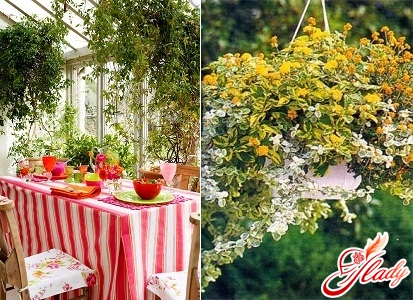
You can start with asparagus
Asparagus is one of the most beautiful ampelous plantsplants. Shoots up to two meters long will perfectly decorate any bright room. There are also compact varieties, the shoots of which are twice as short. The most popular varieties are the setose asparagus and the densely-flowered asparagus of the Mayer and Sprenger varieties. They are undemanding in care and very beautiful, however, they require good lighting of the room. In winter, the plant should be moved to a cool place with a temperature of + 10-16 ° C, and if the temperature is higher, then it should be illuminated additionally.
Hoyi and cerhopes in the interior
The name "wax ivy" under which it isthe plant was known among the people, now it is almost never mentioned. Indeed, many cultivars have very diverse leaves and flowers, among which there are slightly velvety and heavily pubescent, and quite shiny and thin. They do not resemble Hoya carnosa with its "wax" leaves. Of all the types of ceropegia, the most common is Ceropegia woodii, which is considered decorative. This is a liana with graceful small flowers and thickened leaves on threadlike thin shoots. The length of the vines can reach 2.5 m. The variegated variety is especially effective, having white-pink or bright pink spots depending on the lighting. Less common is Ceropegia linearis. It is no different from the previous one, except for the narrow shape of the leaf. Ceropegia love well-lit places with diffused bright light. Episcias also belong to such indoor plants. These plants should be placed so as to admire the play of light and shadow on the cascades of leaves and flowers.
To the originals - cacti
The most beautiful flowering and unusual ampelouscan be found among cacti. They need a lot of light, but they tolerate dry air very well. They can even be taken out onto the balcony in summer, providing only light shading from direct sunlight. They easily tolerate drafts, temperature changes, and do not require frequent watering. But if you want them to bloom, they need a dormant period in winter with reduced watering and a temperature of + 8-15 ° C. Along with the already widespread ripsalidopsis, epiphyllum, schlumbergera, aporocactus, ripsalis is becoming increasingly popular. Like all cacti, they do not have leaves, but the stems can be very diverse - faceted, cylindrical, winged, flat, even twisted into a corkscrew. The length of the shoots in different species varies greatly, sometimes reaching one and a half meters.
Ferns in the interior
Luxurious branched ferns with carved,openwork leaves are very popular as a houseplant. The most common ferns are all species of the genus Nephrolepis. Among them are small, within half a meter, and large, capricious and not so. To grow these indoor plants in the interior, you need to choose those with beautiful leaves hanging down in arcs. One of the most beautiful among them is the Verona variety with dissected drooping leaves, and the most unpretentious is Nephrolepis exalted. Large specimens of Nephrolepis should not be raised above the floor more than one and a half to two meters. This will make them easier to care for. The exotic fern Platycerium is first grown on loose substrates in pots, and then transplanted onto blocks of branches or driftwood, placing peat or moss under the roots. Plants are attached to the block with a net or fishing line. Watering is carried out by immersing the plant in a container of water. You can "bathe" it in the bathtub by pouring a few liters of water on it. After such a bath, the plant should be left in the bathtub to drain off excess water, and then the fern is returned to its place. Such epiphytic species of fern as davallia, lygodium and polypodium are also good as hanging plants in the interior. They look especially beautiful in baskets. They are not capricious, but with careful care they feel much better. Do not forget that in epiphytic baskets the substrate dries out quickly, so you need to monitor its humidity. The necessary humidity is provided by spraying.
To collectors for a note
Some plants can be grown on the shelves above.species of the Gesneriaceae family. The most popular of them are Saintpaulias. But for top cultivation, not the usual standard rosettes with a shortened stem are suitable, but those that hang from the flowerpot by a quarter of a meter or more. If we talk about flowering ampelous plants, then episcias are the most elegant of them. Such indoor plants look great in the interior of an apartment. Beautifully colored, sometimes with a folded surface, velvety leaves shine brightly in the sun or shimmer and shimmer in diffused light. Alsobia carnationata is also magnificent. Small dark green rosettes of small velvety leaves and large white tubular flowers with fringe on the petals immediately attract attention. Other representatives of this species are columneas and eschinanthus. But these are heavy and large plants that require reliable fastening. They are photophilous. On western and eastern windows these plants tolerate sunlight normally, but on southern windows they can get burnt under direct sunlight. Aeschynanthuses differ from Columneas by smoother and larger leaves, and also by the fact that flowers are tied only at the top of the shoot, and not along the entire length of the whip. The shape of the flower is also different. In Columneas, the petals of the flowers seem to have grown together into a "hood". In addition, eschynanthuses are not capricious: they do not require a cool winter for flowering. These indoor plants in the interior do not need special care.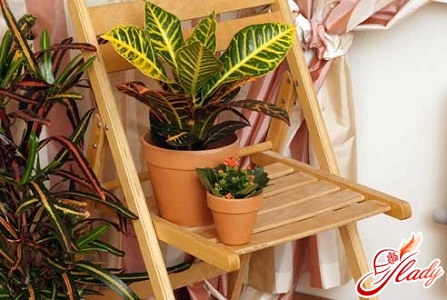
For non-standard conditions - gynur
Creeping and wicker ginura have unusualcolored leaves, for which it is bred at home. But sometimes ginura does not harmonize with the surrounding environment and looks like an ink blot against the background of colorful wallpaper and brown furniture. Such indoor plants look good in the interior of an apartment only against a light background. It can coexist in compositions with yellow-green and light green foliage, as well as with plants of the same palette. Plants with large, fleshy leaves and bright flowers are ideally shaded by muehlenbeckia tangled. Like a vignette in a text, it brings lightness and grace to the composition. Gynura love light very much and easily tolerate even direct sunlight, provided there is good ventilation. Therefore, with the onset of summer and until autumn, they can decorate balcony compositions. But on the southern windowsill in the summer it is too hot for them - you should not keep them near the glass at this time. A flowerpot with a plant can be placed on a hanging shelf hanging from the ceiling near the window. With such a good placement, the plants will not overheat and will not interfere with closing the curtains. Gynura, in principle, feels fine in partial shade, but then it stops blooming and stretches out a lot.
Needles in the house
Among the ampelous plants there are plants that haveall the beneficial properties of conifers. For example, the nogospods release oxygen ions, phytoncides, purify the air and are less demanding than junipers, cypresses and cryptomerias to the conditions of maintenance. Only a few species are grown at home. The large-leaved nogospods, so that its shoots hang down, must be specially formed in the form of a cascade. But the branches and trunk of the thin nogospods, or, as it is also called, ampelous, hang down without support.
Other methods of containing ampel plants
Many potted plants are moved for the winterfrom balconies to windowsills, but sometimes there is a catastrophic lack of space for them there. Instead of placing them close to each other, place these indoor plants on beautiful shelves and stands or simply hang them on the wall. On a windowsill located above a radiator, from which a stream of dry hot air rises, such plants as columnea, hoya and cissus feel uncomfortable. The edges and tips of the leaves turn brown from dry air. It is better to place these plants next to a window, for example, on a columnar jardiniere, on a shelf or in a ring-holder attached to the wall. Be sure to ensure that the pots with plants are installed securely. If a heavy plant with a pot falls off the wall or shelf, it will perish itself and may damage interior items. Many ways of keeping ampelous plants have already been invented. One of them - keeping on stands - is very effective, although it eats up space. Since attention will involuntarily linger on the stand, it should be impeccable. Such stands can be placed wherever it is convenient for you and where they do not violate the harmony of style and interior space. If you put the stand in a very lighted place, then you can place Gerrein and Rowley's ragworts there - charming green beads on thin stems. On a free-standing metal jardiniere, the eschinanthus will not suffer from the flow of dry, hot air rising from the radiator, and therefore it will delight you with lush flowering. Buying flower stands in the form of a column, so that they have a wide, stable base. Flowerpots woven from willow twigs or made of ceramics will help to very successfully place your hanging favorites on the wall anywhere, and a traditional metal wall basket in an antique style will be useful not only for hanging ones. You can place a composition of dried flowers in it. To avoid staining the walls, put a waterproof insert in the basket or place the plant directly in the flowerpot. Wooden shelves with beautiful carvings are a great option for placing hanging plants in the house that do not need bright lighting, such as ivy. And stationary metal structures will shelter several plants in small pots. Beautiful forged shelves can be fixed not only to the wall, but also to the window or ceiling. Among hanging plants, chlorophytum is perhaps the most unpretentious. Even in poorly lit rooms, chlorophytum manages to feel great and acquires many charming children. Daughter rosettes amusingly hang down on long whiskers. If you bury the children in pots prepared under the stand with chlorophytum, you will create a magnificent composition reminiscent of a green waterfall. And after three to four weeks, the umbilical cord connecting the “babies” to the mother plant can be cut, and then you will get several new plants to decorate your own home.




